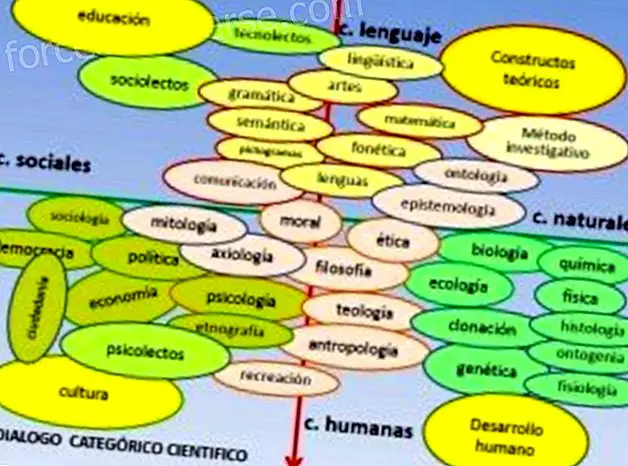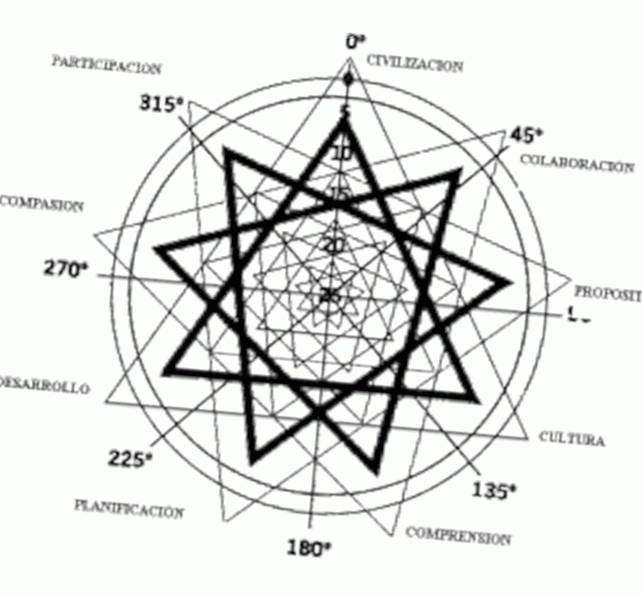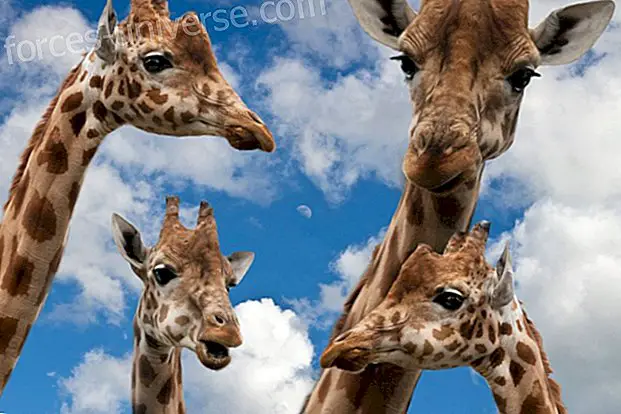
Three souls constitute a soul
The soul of each of the body parts is the Maker.
The soul that feels, thinks and desires is the Knower.
The soul that uses the other two is that of the Creator.
Robert Browning
The history of evolution is the history of consciousness and the growing expansion of the principle of "becoming conscious." The stories define the range of characters and the environments in which they act, the actions that are permissible and understandable and thus provide a map of possible roles and worlds in which the action, thought and definition of Being are permissible. That Being arises from the ability we have to reflect on our actions, by the functioning of metacognition. Human beings perceive, feel and think at the same time, they also act within the limitations of what they "persist". Let us represent the dialogue that occurs in the mind of a human being.
TRANS : Have you thought about the world and reality outside of our perception? Don't you think there are several levels of reality depending on the level of perception? What does a third party include to knowledge?
The simple or complex are not things, but the relationship between them and the level of awareness and perception.
DISCIPLINE : And what would those levels of perception and reality be?
INTER : I'm glad you asked that question. It has always disturbed me. For me, the reality under investigation must be projected in the curriculum and must be based on reciprocity and mutuality. The interdisciplinary involves sharing a theme among several disciplines, sharing a linguistic domain and convergence of more than one dimension of reality.
TRANS: Each of us is representing a different level of understanding reality. You, discipline, conceive reality as a structure and object that you try to explore, describe, understand. You, inter, understand reality and intervene in terms of collaboration, cooperation. Each one of you has provided complementary visions and knowledge. You are like waves, forming part of the sea.
DISCIPLINE AND INTER: Complementary, sea waves, third included. Explain yourself. Explain what that sea wave is.
TRANS: The sea has always been a source of inspiration not only poetic and vital, but transcendent. It is a resource to feel reality. The third level of consciousness perceives multidimensional and transcendent reality.
INTER: I begin to understand, Trans. Complementarity, uncertainty, ambiguity, recursion, would be the categories that would feed the complex thinking and strategies of a curriculum for life.
TRANS: That would be just one of the consequences of the third level of consciousness of reality. A curriculum that starts from life and is oriented to life. To incorporate a new look in virtual environments, environmental reality and the ethics of values filter all knowledge. Sentipensa r is the living expression of this encounter in which thought, feeling and action dialogue. Sentipensar is the educational path to reenchant education.
Feeling to hear his name he realized that he had had a real dream. Sentipensar was on an inter- continental and trans- oceanic flight, traveling from Spain to Colombia and while trying to understand what a complexity-based curriculum would be, while contemplating from the window of the by plane the majestic geography of our planet, it fell into a state of reverie. Upon awakening he realized that the curricular reflection (Inter and Trans) were on his mind (Discipline). And he knew because he paid attention to the last comments of Inter and Trans.
INTER: Reason and emotion, thought and feeling, form the dance of light and shadow of the conquered freedom. Each one of us, when contemplating it, cries and laughs from the dreams we had, the subliminal intuitions, the explicit game of contradictions, the configured history.
TRANS : I share your opinion and I would add that processes of synergy, intuition, higher consciousness, when we interact with a multidimensional reality, concur in every act of investigation and formation.
Sentipensar begins to raise problematic questions about language, education and culture.
 TRANSDISCIPLINARITY, TRANSVERSALITY AND CONVERGENCE.
TRANSDISCIPLINARITY, TRANSVERSALITY AND CONVERGENCE.
PROBLEM 1: What is the curricular approach chosen to configure a culture?
OBJECTIVE 1: Determine the curricular approach that responds to social problems.
Our knowledge is like the map we make to move through the territory of reality. We can never acquire a map that is exactly the same as the territory you are trying to represent. Our representations are models that try to reconstruct the structure of reality, but never reflect it.
Transdisciplinarity rests on an open attitude, of mutual respect and even humility, in relation to myths, religions and systems of explanations and knowledge. Transdisciplinarity is, in its essence, transcultural. The transdisciplinary is based on three theoretical pillars, which are:
1. Levels of Reality.
2. The third party logic included.
3. The complexity.
A truly transdisciplinary research in involves systemic thinking and a conceptual dynamic between "exact", "human" sciences, art and tradition. In this way, this transdisciplinary approach is inscribed in our brain by the dynamic interaction between its two hemispheres.
While the transdisciplinary approach is a new way of understanding reality, transversality is a new way of approaching the curriculum. Both make reference to a way of seeing, interpreting and assuming reality, to a way of living human relationships from a holistic perspective, which contributes to overcoming the fragmentation of knowledge. The above promotes the integral formation of people, articulating the areas of being, of knowledge, of knowing how to do, of knowing how to live together, in such a way that subjects are able to respond critically to historical, social and cultural challenges. of the society in which they are immersed.
Thus, mainstreaming in education implies going beyond the explicit contents in the curriculum, which, while important, are insufficient when it comes to addressing education for the exercise of human rights. It is necessary then that transversality is installed in the daily experiences of the school, that each of the members of the educational community in their practices evidences their transformation process, that the transformation of pedagogical practices and school culture contribute to the construction of democratic environments.
The transdisciplinary convergence of scientific and technological research, around functional and emerging phenomena, given from the neurophysiological activities of the brain and nervous system, which are typically called mind and behavior, gave rise to cognitive science. Similarly, there is a convergence between nanotechnology, biotechnology, computer technology and cognitive science such that scientists have noticed that the boundaries between these disciplines are disappearing. For example, if a new nanoparticle is inserted into a cell, is this a biotechnological or nanotechnological act? If this molecule has a memory that can record what happens inside the cell, is it about nanotechnology or computing?
 MIND, MODEL AND REALITY
MIND, MODEL AND REALITY
PROBLEM 2: What is the pedagogical model that responds to the new age educational challenge?
OBJECTIVE 2: Determine the pedagogical model of teaching for understanding, which integrates the two aspects of divine energy: knowledge and wisdom.
In every physical system there is a concrete system composed of elements, relationships and operations, a conceptual system from which we can organize the real and understand it as our world, it is the mental model with which we model the real to organize it. There is also a symbolic model that refers to the conceptual system.
SYMBOLIC CONCEPTUAL MATERIAL
Solid Concepts Symbols
Liquid Axiom Reasoning
Gaseous Principles Algorithms
Plasmic Images Intuitions
Sonic Acoustic Sounds
Photonic Light Lights
Quantum Frequencies Waves
Constructivist theories of learning propose a model built or developed from our experience, but not directly extracted from it. For constructivism, learning is building models to interpret the information we receive.
The learning system and the mind as a system
Every learning situation can be analyzed from four basic components of an open system: inputs-process-outputs-feedback.
- The contents of learning, inputs or what will be learned.
- Learning processes, or how these changes occur, through which cognitive mechanisms such as attention, perception and memory.
- The learning outcomes or the way in which what is learned will be evidenced, the student's performances.
- The conditions or type of practice that takes place to start the learning processes as well as the necessary feedback.
The processes refer to the mental activity of the person who is learning. Human learning has two types of processes: cyclical, reversible, cumulative processes, based on repetition and linked to the maintenance of stability (learning by association) and irreversible evolutionary processes, which produce a reorganization and an increase in complexity (learning by restructuring). We find a complex system with a hierarchical organization that integrates various processes. The human mind as a complex system has to be analyzed from different levels or levels of complexity, each of them with emergent properties from the previous ones.
- The connection between information units.
- The acquisition and change of representations.
- Reflective awareness.
- The social construction of knowledge.
Complexity and inclusion.
In analyzing the mind as a system we find that it operates based on various structures. Intelligence becomes a superstructure and is not seen as something unitary that groups different specific capacities with different levels of generality, but as a set of multiple, distinct and independent intelligences.
Thus, one of the essential vocations of new age education will be the examination and study of human complexity. She would lead to awareness, of the common condition of all humans, and of the very rich and necessary diversity of individuals, peoples, cultures, about our roots as citizens of the earth. It is pertinent, however, to conceive a unit that ensures and favors diversity, a diversity that is inscribed in a unit. This is the motto of inclusion that exceeds that of integration.
The human being is the same singular and multiple at the same time. We have said that every human being, such as the point of a hologram, carries the cosmos itself. We must also see that every being, even the most enclosed in the most banal of lives, constitutes in itself a cosmos. It carries within itself its interior multiplicities, its virtual personalities, an infinity of chemical characters, a poly existence in the real and the imaginary.
Education should illustrate this principle of unity / diversity in all fields. In the individual field, there is a genetic unity / diversity. In the field of society there is a unity / diversity of the languages of social organizations and cultures. In the cultural field there is a diversity of beliefs, ideas, values, myths that are transmitted from generation to generation, reproduced in each individual, controls the existence of society and maintains the psychological complexity and social, whose unity we find in the archetypes of the collective unconscious.
The complex thought:
Thought is a complex dialogue of activities and operations that put into operation the complementary powers of the brain-mind-consciousness triad. Complex thinking is directly related to the concept of feedback in the analysis of an open system and its input-process-output components.
The development of quantum physics led to a revolt of duality, wave and particle; continuity and discontinuity, separability and non-separability; local causality and global causality; symmetry and rupture of symmetry, reversibility and irreversibility of time, etc., giving rise to an included third party, the one that unifies the opposites. Thus the triumphs appear.
We found a bio-anthropological triad inside the brain. The relations between its three components are not only complementary but also antagonistic, involving the well-known conflicts between impulsivity, heart and reason; in a correlative way, the triennial relationship does not obey a reason / affectivity / impulse; there is an unstable relationship, permuting hierarchy, rotating between these three instances
There is an individual triad-society-species relationship. Individuals are the product of the reproductive process of the human species, but this same process must be produced by two individuals. Interactions between individuals produce society and this, which certifies the emergence of culture, has a retroactive effect on individuals by the same culture.
Man is only completed as a fully human being by and in the culture. The human mind is an emergence that is born and affirmed in the brain-culture relationship. Once the mind has emerged, she intervenes in brain functioning with retroactive effect. There is then a triad in a loop between brain-mind-culture, where each of the terms needs the others. The mind is an emergence of the brain that arouses culture, which would not exist without the brain.
These triads or feedback loops are what facilitate complex thinking and therefore understanding. The current trend towards complexity allows us to acquire knowledge and transmute it into wisdom with the help of understanding, and thus get to acquire true enlightenment. When the brain-heart-mind triad is activated, three other triads are activated accordingly: the triad of knowledge, the triad of love, and the triad of goodwill. Due to the activity of the triad of knowledge we have civilization-culture-development. The activity of the triad of love generates collaboration-compression-compassion. The activity of the triad of will generates participation-purpose-planning.
So, it is possible to think of a democratic school where the balance between rationality and feeling, between system and individual, between person and society is fertilized. In other words, to enable the externalization of esoteric schools that work with the concerns, aptitudes and attitudes of the microcosm of their disciples in line with the macrocosm. This pedagogical model of globality is characteristic of transversality itself, of a holistic view of reality.
Deep psychology and ecology:
Transversality is part of a new social paradigm that could be called the holistic vision, since it sees the world as an integrated whole, rather than as a discontinuous collection of parts. The perception from deep ecology recognizes the fundamental interdependence between all phenomena and the fact that, as individuals and as societies, we are all immersed in the cyclic processes of nature. The perception from deep psychology recognizes the emergence of archetypes from the collective unconscious, immersed in the concepts of masculine and feminine, to highlight the individual's isolation and recognizing it as part of a larger unit whose volume and depth exceed it.
Throughout human history there is a triple thread, and in the interaction of these three threads is the history of evolution. A thread guides the thoughts of man while he deals with developing the form aspect of racial tendencies, and shows that the forms of races, countries, fauna and flora of our planetary life, have gone, without deviating, parallel to the needs of the children of God who emerge slowly. The second thread leads us to an understanding of the development of consciousness, and indicates the emerging stage that goes from instinctive to intellectual perception, and from there to intuitive illumination, current goal of consciousness.
The third thread concerns the Plan itself that has emerged as a result of the feeling of social responsibility. What is the plan and what is its goal, can already be understood by all members of a community.
Life and consciousness are different names of the same essence, when attention is fixed on unity, one speaks of life; and when in diversity, awareness; but it is forgotten that diversity is the essence of matter on whose reflective surface the One diversifies into the Various. The thread of consciousness is in the brain and the thread of life in the heart. These two poles of the human being interact to develop the medium or balancing aspect that is love or group conscience, so that knowledge can be subordinated to the interests of the group and so that life can be consciously and intentionally dedicated to the whole group . The Service is a scientific technique to achieve this balance.
EDUCATION AND CULTURE
PROBLEM 3: What are the transversal axes that will give life to the curriculum?
OBJECTIVE 3: Make the transition from curricular meshes to conceptual networks.
The goal of all education is to produce some form of culture. Education could be defined as the Science of the right human relationships and social organization. The consolidation of pedagogy as a science is the immediate step in the mental development of the race. Pedagogy as an action of man over man requires the intervention of the mental structures of learners and the configuration of conceptual networks.
The curricular design implies the drawing of horizontal, vertical and transversal lines. This analogy is taken from geometry, a discipline that defines the surface as that generated by a line, called a generatrix, when moving on a curve or several, called guidelines. A Teaching for understanding proposal designates these lines as topical (the horizontal ones), threads (the vertical ones) and axes (the transversal ones).
Generative TOPICS are the ideas, concepts, themes, facts or central or fundamental objects that go to the essence of each discipline, and that organize it (components).
The THREADS drivers are the expected performances, help to weave some ideas with others and give a sense of unity to what is being done (competences).
Transversal AXES are the rules that lead intelligence to take control. The transversal axes are designed to guide the interaction with formal and informal learning spaces and dialogue with myths, attitudes and imaginary, to achieve their analysis and resignification. The transversal axes, in addition, condense the learning needs of the students, since the Pedagogical Projects have to address thematic, content and some specific knowledge. These learnings are those that when internalized as a whole allow students a science with awareness, the fusion of consciousness and life.
Finally, the problematic triads are the meeting point of three conceptions of a situation and allow you to shape a text in context. The problematizing questions help to limit and structure the generating topics and facilitate disciplinary integration. They involve the management of theoretical frameworks, concepts and procedures of various areas of knowledge to understand or solve the problems posed.
DISCIPLINES | COMPETENCES | RULES | PROBLEMS |
Geopolitics Religion Anthropology Pedagogy Psychology Sociology Economy | Referencing Service Orientation Teamwork Systemic thinking Mental models Leadership Entrepreneurship | Synthesis Vision Plan Creativity Analysis Idealism Duality | International unit Organized religion Minority groups Human relations Significant learning Psychology of the nations Working capital |
The problems stimulate the conceptual dynamics, being the most important concept of the triad of active intelligence: thought, work and action. In the same way they stimulate human creativity regarding the usefulness and originality with which the problems will be solved. Systemic thinking has contributed to the analysis of humanity's problems.
The plot will be material (disciplinary), the warp will be moral (interdisciplinary) and the fabric will be cultural (transdisciplinary).
Cultural processes and human relationships.
The ability to produce knowledge, continuously improve them and develop strategies to transmit them to new generations, has allowed man to have extraordinary control of natural and social processes, and by becoming more aware he begins to realize that the changes he is capable of of introducing on the planet Earth, thanks to his science and his technology, they can alter the delicate balance that makes it possible that there is so improbable that we call life, he begins to realize the irreparable damage, which he has caused on that magnificent product, always dynamic, with intricate and complex evolutionary processes such as life. The awareness of a need for ethics is today felt by an increasingly broad sector of human cultures.
From the curriculum to the curricular programs
Teachers, learners and disciples have been grouped into three main divisions, so that the fields of human evolution - science, philosophy and religion - can be properly served. The plan is therefore divided into three main parts, with three main objectives that respond to the three problems of the human development lines, once solved, will bring the rapid solution of the global problems of government, matter and faith.
LEVELS | SECTORS | PROBLEMS |
Strategic | Politician (philosophy) | The ideas. |
Coordinator | Cultural (religion) | The beliefs. |
Operational | Educational (science) | Intelligences |
Although the work is carried out in three fields of human thought and activity, the net result is an effort made to produce a synthesis and a great preparatory campaign in order to reveal the wonders of the fifth kingdom.
From the curricular program to the pedagogical projects.
Advances in the psychobiological and socio-affective knowledge of children and adolescents, the new directions of education and the needs to be resolved to achieve a more integral development of the countries led to national governments to a restructuring of education systems.
The aim is to develop in all disciples the skills and abilities necessary to develop their intelligence potential and get in the way of service and participation in the transformation of social reality.
Each of the seven lines of intervention becomes a program (vertical and horizontal analysis)
While the programs energize the strategies, the projects energize the activities.
From the pedagogical project to the life project.
The pedagogical projects organize the activities to achieve the objectives of the integral formation of the disciples who participate in it. The project revolves around a specific problem or issue, but its relationship with life and everyday life is much more direct, although it deals with the complexity and diversity with which the lifetime.
 PERSONALITY DEVELOPMENT
PERSONALITY DEVELOPMENT
PROBLEM 4: What is the attitude of the personality towards life, and the measure of what is achieved by their intelligence at a given point in space-time?
OBJECTIVE 3: Determine the way in which the personality is conditioned by the quality of its intelligence.
The general purpose of basic education is the full development of personality. A man can be considered to be really a personality, when the body and the mind have been unified . When intelligence exerts influence on the personality and penetrates all the lower manifestations, only then will the personality live up to its true meaning and constitute the mask of the soul, the external appearance of the internal spiritual forces. Essence, conscience and appearance are the three aspects of divinity and of man.
There are seven intelligences that integrate consciousness, seven lines of development of the plan that embody the purpose of life. When this integration of intelligences is achieved, the conscious thinking entity knows the reality of the unity of consciousness and the synthesis of life.
There are four disciplines that have led to the fifth as systemic thinking:
- The personal domain
- The shared vision.
- The mental models
- Team work.
There are four competencies that are developed thanks to active intelligence:
- Harmony is achieved through conflict (line four).
- Unity is maintained while preserving diversity (line five).
- The rights are exercised in compliance with the duties (line six).
- Power is exercised while maintaining order (line seven).
The way to apply all this must be related to the daily expression of life, and at some point the personality must understand the real nature of his dual life as disciples, demonstrated by three overlapping crosses. From the moment a disciple is led by a Master, he has already exhausted much of his good and bad karma, and is prepared to build his own quaternary on which he affirms himself.
Mutable Quaternary: life of spiritual contact.
- God, or the divine Reality, that all forms watch.
- Matter, that is, the opposite pole of God, by which the divine nature is expressed.
- The method for this revelation, based on intelligence trends.
- The embodiment, that is, the opposite pole of the method. The disciple in training always works from the angle of realization, of the success obtained. The servant disciple assumes this attitude towards himself and the work he must do.
Cardinal Quaternary: service life
- Unity . As a result of his successful mutable life, the disciple feels unified with the life that resides in all forms and with humanity in particular.
- This logically results in understanding . Because there are no barriers and no difference is known, the disciple can "tune in" with life in all forms, thus establishing the full measure of inclusiveness, with all that that word implies.
- The disciple's motive is goodwill, which constitutes a growing power when the will to good (with which he indirectly comes into contact in the life of the teacher) begins to affect him.
- This good will - when released - is normally expressed in everyday life.
Consciousness is a kind of organ of perception and directed orientation that uses four functions to orient itself in space.
Fixed Quaternary: life of understanding.
- Intuition Mastery of assumptions and forebodings. To know
- Perception Use sensory impressions. Shut up
- The thought. As a rational function judge and exclude. Dare
- Feeling Rational function that formulates a precise judgment. to love
The I, is in the center, endowed with a creative force that we call willpower. The greatest gift in the universe is life. The greatest happiness for this life is consciousness. The joy for this consciousness is the willpower. The root of the will is love.
Therefore, the disciple lives and acts simultaneously on three levels of activity and is in the process of demonstrating - as far as possible and allowing his stage in discipleship - the three divine aspects; the Will aspect, which governs its work within the fixed quaternary in relation to the great future movement; the Love aspect, which governs its mutable quaternary and produces spiritual firmness in form; the Intelligence aspect, which governs his cardinal quaternary and makes him a wise servant of his fellows.
When the feeling joins the thought (sentipense) the perceiving consciousness recognizes its identity and ends the reign of the Quaternaries. An initial triangle is formed by the will, wisdom and intelligence, and from it there are two points for the extension processes generating dual progression and expansion of the network. The contact established between the three points of each triangle, thus forming a nuptile contact and a nuptimate influx of energy, the Flower of the Self is completely formed.
The network of triangles will be transformed into a network of interlocking circles, indicating that the interweaving of relationships has been completed. This is the Flower of Life.
 EDITOR'S NOTES
EDITOR'S NOTES
1. The interdisciplinary dialogue was taken from the article by Saturnino de la Torre. University of Barcelona.
2. The transdisciplinary approach was taken from the article by Ignacio Gerber.
3. The pedagogical model was taken from the book Apprentices and Teachers of Juan Ignacio Pozo Municio.
4. El pensamiento complejo está basado en el libro Los siete aprendizajes básicos de la educación del futuro de Edgar Morin.
5. El desarrollo de la personalidad fue tomado del libro Educación en la Nueva Era de Alice Bailey.

 TRANSDISCIPLINARITY, TRANSVERSALITY AND CONVERGENCE.
TRANSDISCIPLINARITY, TRANSVERSALITY AND CONVERGENCE.  MIND, MODEL AND REALITY
MIND, MODEL AND REALITY  PERSONALITY DEVELOPMENT
PERSONALITY DEVELOPMENT 




